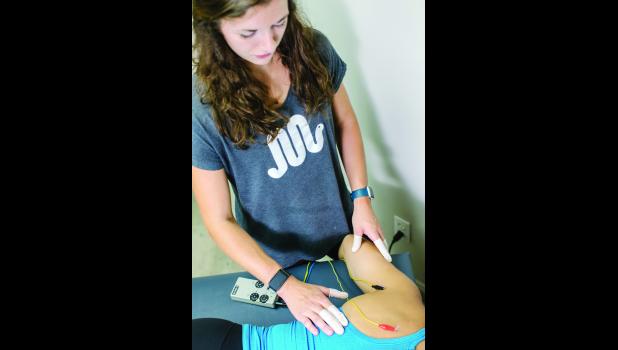Dry needling gets to the point of the pain
Wed, 03/10/2021 - 8:24am
admin
By:
Nate Jones
Rest, ice, compression, heat, aspirin – these are all common treatments for pain. Massage and chiropractic adjustments may also provide temporary pain relief, but what about dry needling? The use of dry needling for pain relief has grown in popularity over the last few years and is a valuable tool used by physical therapists.
Dry needling is the use of thin needles to treat musculoskeletal pain and weakness. The needles do not inject anything (hence the term “dry”). They are extremely thin; in fact, most people report sensing just a tiny pinch or not feeling anything at all. The therapeutic needles are typically inserted into the painful areas within the muscles. Do you know how applying pressure to your upper back or shoulder areas usually uncovers tight and tender spots? Well, these sore spots are examples of where we would insert dry needles.
One of the most common techniques is combining the needles with electrical stimulation (or E-Stim). Small doses of electricity are run through the needles creating repeated muscle contractions. These involuntary contractions help to desensitize the area and relieve pain.
How exactly does the combination of the needles and electrical stimulation work to help relieve pain? First, there are local effects on the muscle tissues. These include decreased acidity in the painful area, reduced inflammatory molecules, and a temporary improvement in blood flow directly to those aches and pains.
However, the main effect stems from the impact that the treatment has on your nervous system. In this way, it’s no different from other soft tissue work. Common manipulations like massage, foam rolling, and soft tissue scraping result in pain relief by changing your brain’s threat perception to the area. For most people, dry needling happens to be a more potent stimulus to create this nervous system change. One might consider it a pinpoint massage.
Now you may be wondering how this all ties into physical therapy and long-term pain relief. Well, unfortunately, dry needling by itself cannot permanently cure pain. Temporary pain relief is achieved when the needles’ stimulus relays to the nervous system “Hey muscles, relax a bit. Act more normal.” This message opens a temporary window of opportunity, one that we can take advantage of and create adaption with strength training.
Genuine long-term nervous system and local tissue changes do not occur from dry needling alone. A follow-up stimulus (you guessed it, exercise) is necessary to make a lasting, more permanent change. This long-lasting change is directly related to pain-free daily movement. Physical therapists often utilize the process of dry needling to mute pain before leading patients through therapeutic activity. Dry needling is an efficient tool to dull discomfort associated with exercising a painful body; however, it is the follow-up activity that creates long-term pain improvements.
Dr. Nate Jones is a doctor of physical therapy with Made2Move Health and Human Performance, a physical therapy and movement specialist clinic on Daniel Island. Visit made2movept.com.

